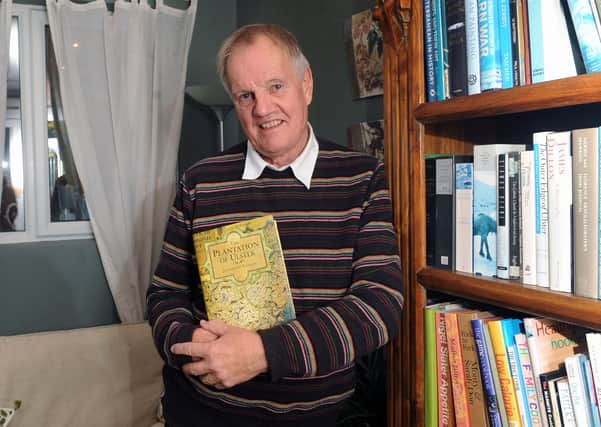In memory of Jonathan Bardon: ‘The early News Letter reports on world events in the 1700s had big impact on Ulster’


When The Belfast News-Letter and General Advertiser first went on sale in September 1737 Belfast, though still just only a tenth the size of Dublin, was a prospering and fast-growing port.
Until it was covered over in the 1770s, the River Farset flowed down High Street.
Advertisement
Hide AdAdvertisement
Hide AdShips moored at full tide at the Town Dock, close to where the Albert Clock now stands.
Cargoes of raw sugar, wines and brandies, exotic fruits, salt coal, timber staves, iron ingots and other foreign imports were hoisted onto to the quays at the bottom of High Street.
From there they were taken to be stored and traded into the narrow entries running off High Street.
The News-Letter (as it was then spelt, with a hyphen that is no longer used) office in Bridge Street was therefore in a strategic position for gathering the very latest news from overseas.
Advertisement
Hide AdAdvertisement
Hide AdLike many other Presbyterian merchants in the town of Belfast, Francis Joy, and his sons Robert and Henry, chafed against the monopoly of power by landlords and higher clergy of the Church of Ireland.
For the second quarter century of its existence The Belfast News-Letter was a platform for debate over reform.
The spirit of the Enlightenment, brought in with cargoes from Scotland, the American colonies, France and Holland, and promoting toleration, scientific enquiry and new ideas, was then disseminated by the News-Letter throughout eastern Ulster.
During the American War of Independence which began in 1776, the News-Letter did much to promote political reform in Ireland.
Advertisement
Hide AdAdvertisement
Hide AdSimply by reporting in detail the meetings and declarations of those demanding change, the News-Letter played a role in forcing the Westminster government to make concessions.
These included granting the parliament in Dublin legislative independence in 1782 and giving Catholics the vote in 1793.
The reading public in Ulster was intensely interested in events in France when the fall of the Bastille in July 1789 was reported.
Week by week, issue by issue, column by column, the News-Letter kept readers informed as the French Revolution got under way.
Advertisement
Hide AdAdvertisement
Hide AdExcited by these reports, some citizens of Belfast, determined in their quest for liberty, equality and fraternity, formed the Society of United Irishmen in 1791.
In May 1790 Francis Joy walked from Randalstown to Antrim to vote for the two independent candidates pledged to demand parliamentary reform, Right Hon John O’Neill and Hon Hercules Rowley. Both were elected and Joy died three weeks later.
His grandson Henry Joy Junior backed progress in the News Letter, including the removal of penal laws against Catholics. The paper, however, refused to sanction the revolutionary aspirations of then United Irishmen.
On June 6, 1798, another of Francis Joy’s grandsons, Henry Joy McCracken, led the United men in the attack on Antrim town.
Advertisement
Hide AdAdvertisement
Hide AdAn early casualty on the government side was John O’Neill, now Lord O’Neill, killed near the town’s market house.
Radical enthusiasm led to revolt and repression, and the execution of McCracken.
Following the carnage of 1798, the Irish Parliament voted itself out of existence and the Act of Union came into force in 1801. The News-Letter had been sold to a Scottish company in 1795 and soon the paper was the principal voice of those in Ulster who defended the Union.
For example, it warned that ‘Home rule is simple Rome rule’ in February 1874, a full five years before Charles Stewart Parnell was leading the campaign at Westminster to obtain a devolved parliament in Dublin. The famous watch-cry was coined.
Advertisement
Hide AdAdvertisement
Hide AdThe backfiles of the News-Letter on microfilm demonstrate how this newspaper kept its readers informed in such remarkable detail and on such an extraordinary range of topics.
Belfast and the area surrounding it was the most literate corner of Ireland from the late 17th century onwards.
The News-Letter surely played its part in keeping up that standard.
• Jonathan Bardon was the author of works including A History of Ulster and The Plantation of Ulster